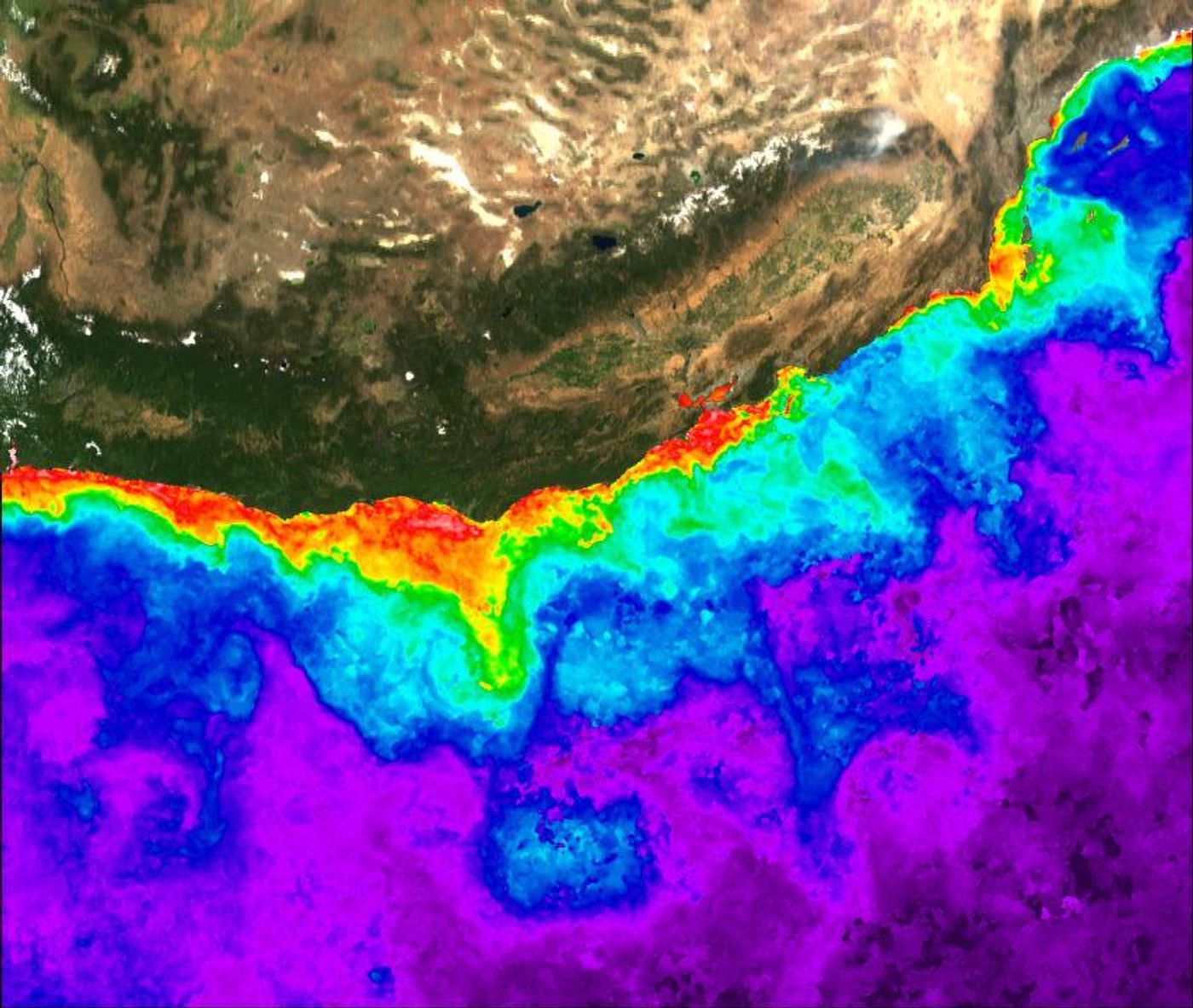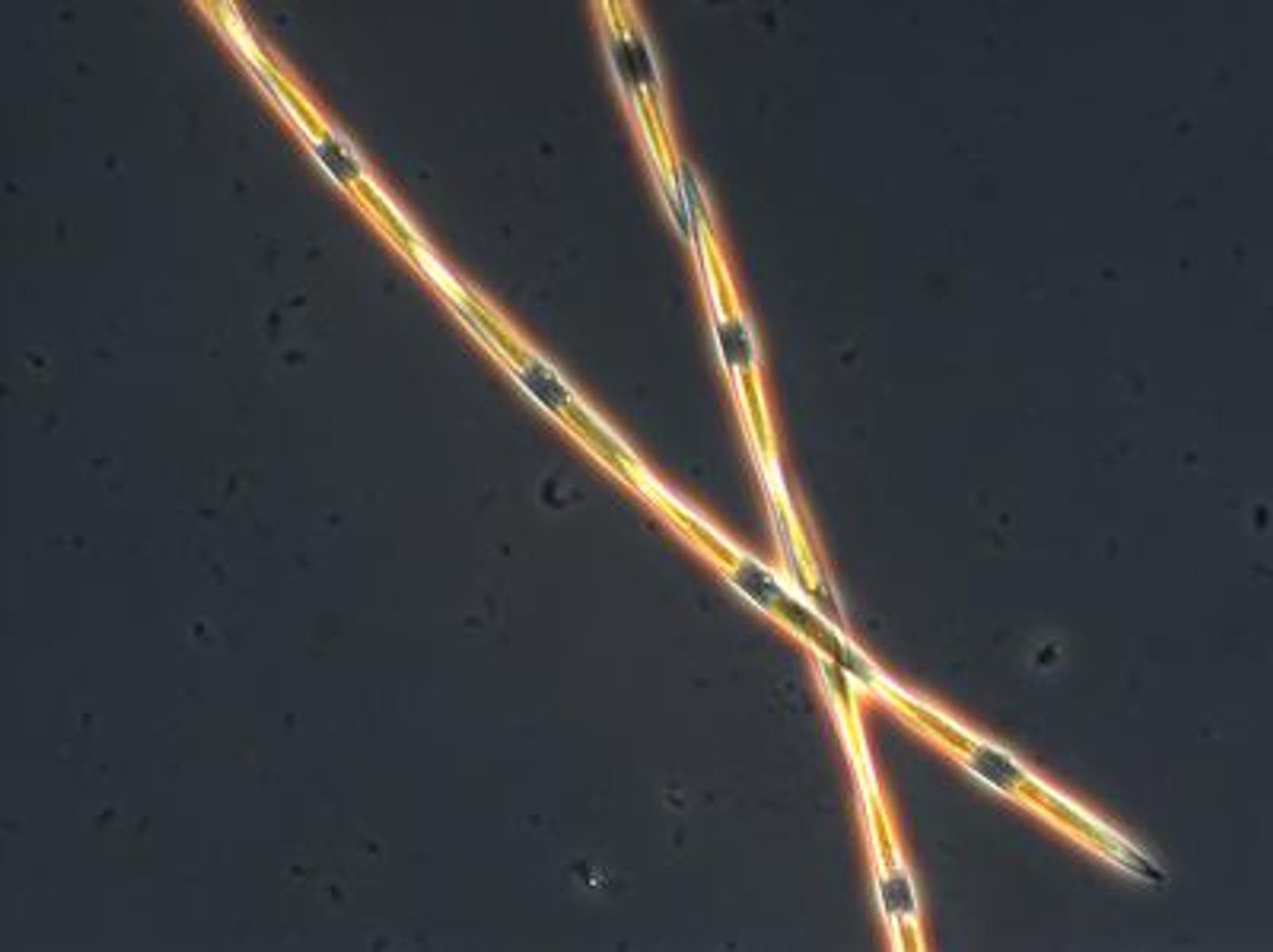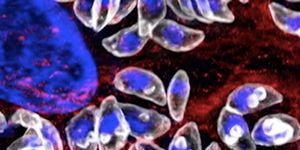Learning What Causes Algae Blooms to Turn Toxic
According to the EPA, algae blooms threaten every state in the US and in our changing climate, they may be happening more frequently. When they turn toxic, they are a danger to the environment by sickening marine life and threatening humans when those toxins build up in seafood and are then consumed. In new work by a team of researchers from Scripps Institution of Oceanography at the University of California San Diego and the J. Craig Venter Institute (JCVI), a cluster of genes has been linked to the production of domoic acid, a toxin found in a phytoplankton called Pseudo-nitzschia.
There have been decades of research done on Pseudo-nitzschia, which is to blame for the biggest toxic algal bloom on the West Coast. Stretching from Alaska to Santa Barbara, it wreaked havoc on fisheries and crabbing operations (and is seen in the above image).
Despite all the research, it was not known until now where the algae's toxicity came from. The genes that have been found by the team contain the directions for making the toxin, and are activated when the Pseudo-nitzschia make domoic acid. These findings have been reported in Science.
"By identifying the genes that encode domoic acid production, we can now ask questions about various oceanic conditions that turn the genes on or off," said co-lead author Patrick Brunson, a Scripps Institution of Oceanography and JCVI graduate student. "This knowledge will allow us to track the development of bloom toxicity at the genetic level."
The team was able to turn the genes on, which could help uncover the oceanic characteristics that promote the toxicity in the algae.
"Understanding how algae blooms become toxic and what conditions cause that is critically important," explained Hedy Edmonds, a program director in the National Science Foundation's Division of Ocean Sciences, which helped fund the research. "This study offers a possible tool for monitoring algae blooms and predicting the production of toxin before it occurs."
Organisms that cause harmful blooms tend to have large genomes; this work will help us understand the genetics underlying those blooms, the researchers suggested. Algal blooms can now be monitored genetically, which will help identify the conditions that get the toxin production going.
"Because the genomes of the algae are so complex, the biosynthetic pathways for marine microalgal toxins have remained elusive for quite some time. Now that we have both a genome for Pseudo-nitzschia and a genetic pathway for domoic acid production, we are beginning to understand why these microalgae make a toxin and how that capability is activated. This new knowledge may ultimately better educate us how to predict and prepare for future toxic events," explained senior author Bradley Moore, a chemist and geneticist at Scripps and UC San Diego's Skaggs School of Pharmacy and Pharmaceutical Sciences.
The team also built on previous work by David Hutchins of the University of Southern California, a co-author; it found that with limited phosphate supplies and abundant carbon dioxide, diatoms will generate a lot of domoic acid - a dangerous turn of events. Carbon dioxide levels are rising in ocean worldwide, potentially pushing up domoic acid levels.
"We found it very interesting that a combination of phosphate limitation and increased carbon dioxide could have such a strong yet nuanced effect on domoic acid production in culture," noted senior author Andrew E. Allen, an ecologist and diatom genomics expert with appointments at Scripps and JCVI. "We were able to directly correlate gene expression to toxin production, and this observation led us straight to the genes encoding domoic acid."
After identifying the relevant genes, the researchers were able to look at the enzymes that produce the toxin’s core structure.
"Some of the domoic acid biosynthetic enzymes that build this toxin are unique at the genetic and biochemical level," said co-lead author Shaun McKinnie, a postdoctoral researcher at Scripps and the Center for Marine Biotechnology and Biomedicine. "Now that we can link these diagnostic chemical transformations to their enzymes and genes, we're hopeful that researchers can begin to predict domoic acid toxicity potential in a harmful algal bloom to complement current monitoring approaches."
"This breakthrough marks a clear inflection point in our understanding of these events given that so much of the uncertainty surrounding toxic blooms of Pseudo-nitzschia is a result of our incomplete grasp of domoic acid synthesis itself," said biological oceanographer Clarissa Anderson, director of the Southern California Coastal Ocean Observing System (SCCOOS) at Scripps, who was not part of this study. "The holy grail of harmful algal bloom forecasting on the West Coast and elsewhere is predicting when, where, and ultimately, why Pseudo-nitzschia turns on or turns off domoic acid production. We may never be able to prevent this type of harmful algal bloom, but we can better monitor the early stages of domoic acid production."
Sources: AAAS/Eurekalert! Via Scripps Institute of Oceanography at UCSD, EPA, Science










